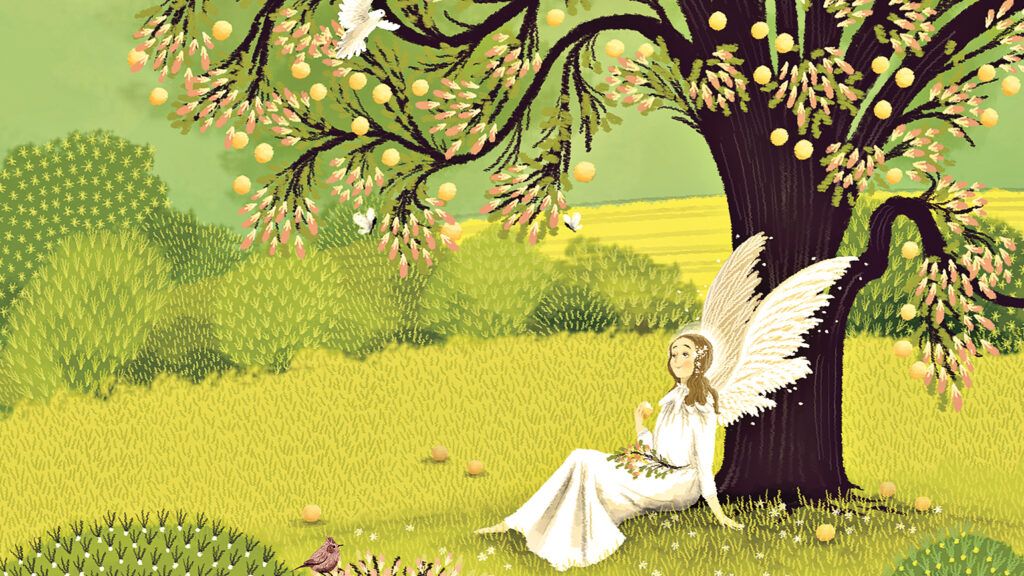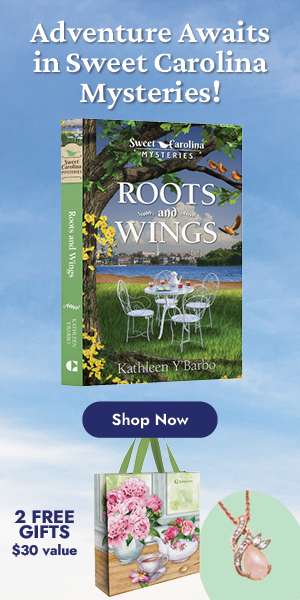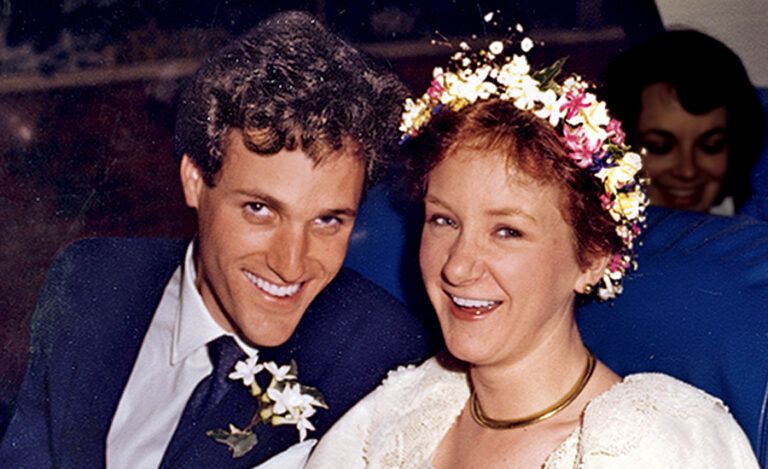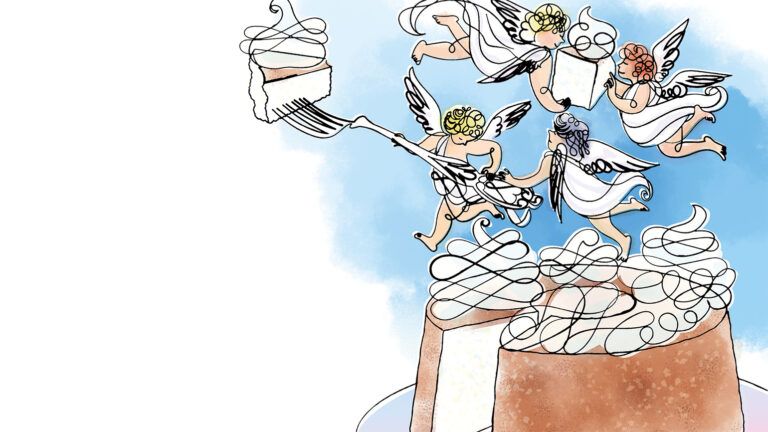I steered my pickup down the long drive and out the front gate of the farmhouse. I watched in the rearview mirror as the house—and my dreams with it—faded from view.
In the bed of the pickup was most of what I owned. I was moving. Running away from an abusive marriage and yet another dead end. So much of my life had been a struggle. Abuse and neglect as a child. A first marriage to a violent alcoholic and drug addict. Then this second marriage, which had seemed so right. But he turned out to be abusive too, and I feared for myself and my kids.
I’d found a teaching job in Utah, near where I grew up, hundreds of miles from this farmhouse in rural Washington. My three older kids were grown and living on their own. My younger two were staying with their grandparents until I got settled in Utah.
I was scared. I’d started over so many times. Why would this time be any different?
Looking in the rearview mirror, I saw the plant pot in the pickup bed. That was my little tree. An Asian pear tree my mom had given me as a housewarming present when my second husband and I moved into the farmhouse. Asian pears were my favorite fruit.
The tree had never grown. Like so much else in my life, it withered. I wasn’t totally confident it was still alive. I dug it up anyway, potted it and put it in the truck. I couldn’t abandon it. It looked exactly the way I felt.
I still remembered my surprised delight five years earlier when the tree arrived in the back of a UPS truck. I was so full of hope then. My husband and I hadn’t even finished moving into the farmhouse. We’d married in Tacoma, then looked for a place large enough for our combined family—his one child and my four from more relationships than I cared to recall.
The farmhouse with a view of Mount Rainier was surrounded by thick woods and came with a three-stall barn on five acres. Elk grazed on the front lawn, and bald eagles nested in the treetops. At night, coyotes howled under the canopy of the Milky Way.
My mom came from her home in Ogden to help us get settled. She was there when the UPS driver dropped off the oblong package with the tree. I thought it was a mistake, but then I saw Mom grinning.
“Open it,” she said.
The tree was an offering of hope. Hope for this new chapter of my life. And for my relationship with my mother.
My parents, born at the beginning of the Depression, endured difficult childhoods. Dad was raised in an abusive foster home. Mom was scarred by her own upbringing. I was caught in the middle of their tumultuous marriage.
I wanted a different life, but I ended up creating my own chaos. For years my relationship with my parents was strained. Recently, Mom and I had come to a place of mutual understanding. We would plant the tree together.
We carried it across the front yard to a small apple orchard on the property. We found a perfect spot beside some raspberry and blackberry bushes. We dug a hole and put the tree in the ground.
It never grew.
No matter how much I watered it, no matter what soil improvements I added, that poor tree never put out branches, never budded, never produced a pear. It remained a bare stick, putting out a leaf or two each year to let me know it was still alive.
Eight weeks after the tree arrived, Mom died of a sudden stroke. I was devastated. And that was only the start of my troubles.
My husband, who had seemed so kind and tender when we met, turned cold and controlling once we married. Small acts of aggression mounted until I woke up every day afraid for myself and my kids. I hung on, determined not to fail at yet another relationship. At last I knew I had to leave.
By the time I had dug up the pear tree and drove away with it in the back of my pickup, I had no confidence about the future. I truly was like that tree, clinging to life, unable to flower.
In Washington, I had worked as a kindergarten teacher. I’d looked all over the country for an equivalent job and found one in Ogden, right near where I grew up. Was that a sign? I did not trust myself to hear God’s voice. I’d prayed about a lot of things over the years, and most of them, like my marriages, had turned out disastrously.
Once, in my wild and rebellious phase after high school, I got drunk at a party, tried driving home but quickly pulled over and passed out in the car. I awoke the next morning to discover I was parked in front of my family’s church. That’s how God had to reach me in those days.
Show me a better path, I prayed on the drive to Ogden.
The first good thing that happened in Utah was moving into Mrs. Isom’s house. She was the mother of one of my childhood friends. She was warm and old-fashioned. I still called her by her last name, and when the kids joined me there she treated each of them like her own. She let us stay with her until I found an apartment to rent and then later a house to buy in the small town of Hooper, just outside of Ogden.
The house had a view of the Wasatch Mountains and surrounding farmland. The kids quickly settled into school, and we found a church with a robust youth group and a welcoming pastor. The kids had worried about starting new schools. And I had worried that they wouldn’t fit in. They made friends immediately.
I started work and loved my job. Eventually I was able to transfer to a school in Hooper, which eliminated my commute. Everywhere I went, people were kind, welcoming and helpful.
One evening I invited a few neighbors over for dinner to celebrate my daughter’s confirmation at church. One of the neighbors happened to mention that his last name was Dinger. He and his wife had a grown daughter named Michelle.
“Is your daughter the Michelle who lived on Liberty Avenue in Ogden forty years ago?” I asked. He nodded. “I was one of Michelle’s best friends when we were kids! I broke my arm on your swing set!”
We laughed and stared at each other in disbelief. A few days later I discovered that the neighbor on the other side of my house had also lived on my childhood street. I was surrounded by loving parental figures with ties to my past.
All the while, I had been watering the pear tree in its pot, encouraging it to grow. We bought the house in Hooper in November, just in time to plant before the first hard freeze. The kids and I found a spot in the yard and dug a hole. I surrounded the tree with trellises for protection and prayed for it throughout the cold, snowy months.
One day the following spring, I came outside and noticed a fleck of green on the tree. A leaf! It was followed by several more leaves. Then some twigs and some buds. The top sprouted up, and the little tree put on several more inches. It seemed to draw strength from the strong Utah sun and the sound of kids laughing and dogs barking.
Two years later, we plucked the first small Asian pear. The next year, we got a whole basketful. Since then, I’ve barely been able to keep up with the tree. It’s tall now. Full of leaves. Rooted. Fruitful. Safe and at peace.
Like me.
Did you enjoy this story? Subscribe to Angels on Earth magazine.






